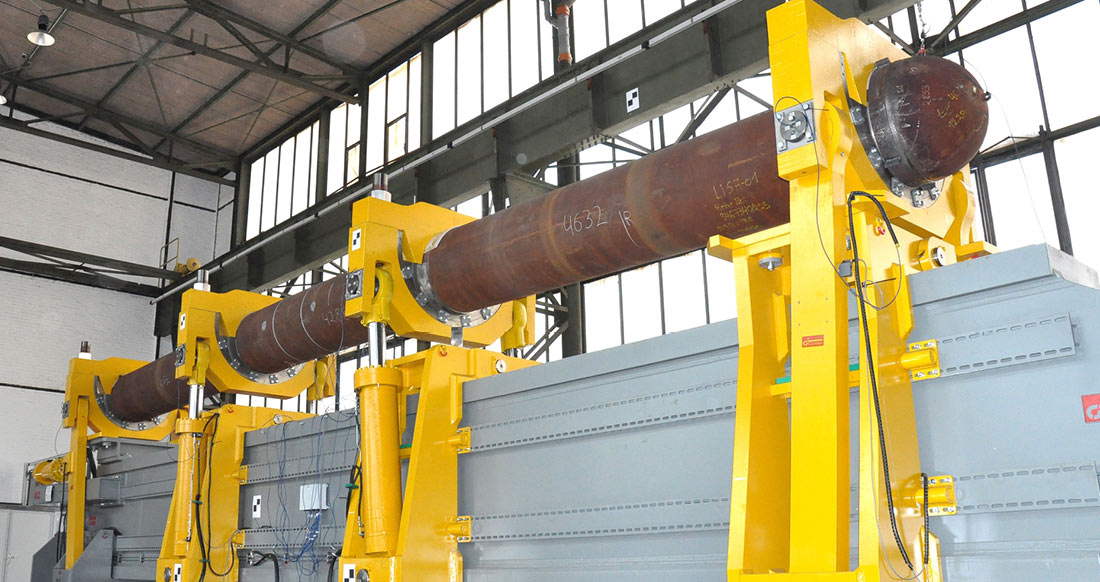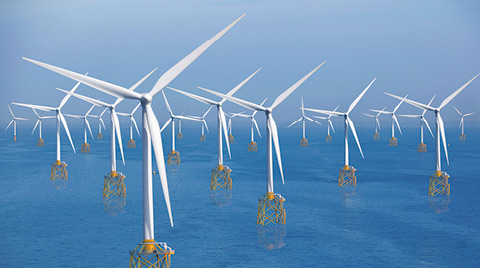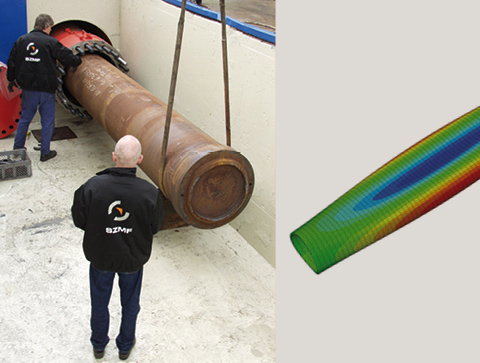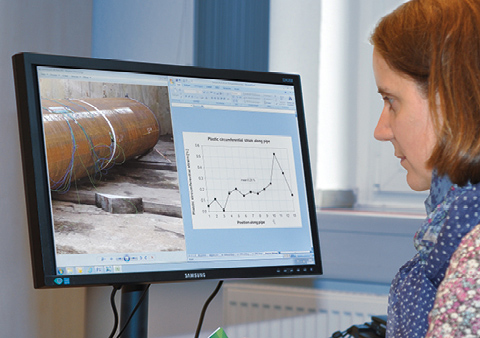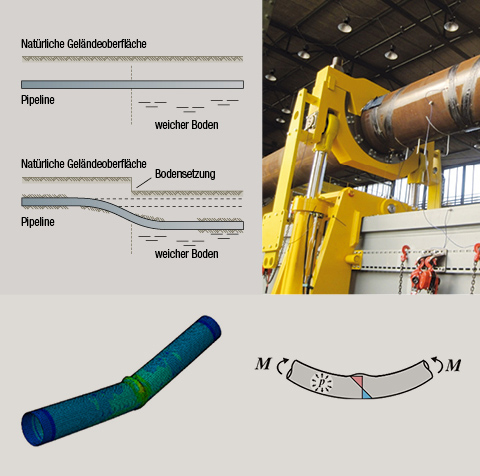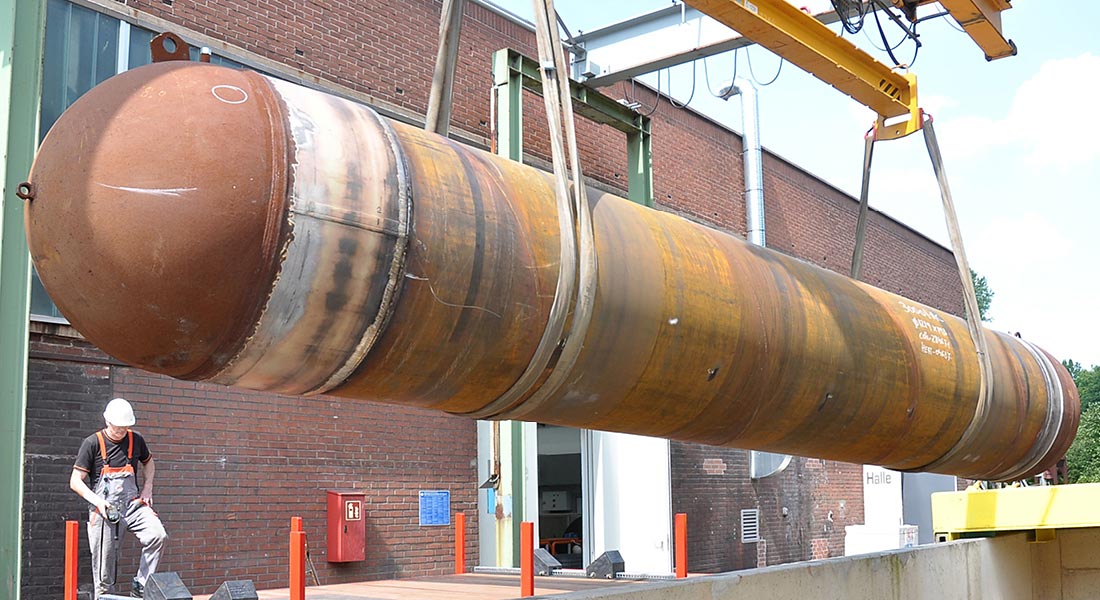Research & Development
Improvements in the pipeline
The development of innovative products and improvements in quality standards are closely associated with the fields of research & development. For the Salzgitter Group, they play a central role in the realization of innovative ideas, even today. So central that this task has been entrusted to an entire company within the Salzgitter Group – and not just as of late.
Experimenting, tinkering, trying things out, and thinking differently and out of the box – company founders Reinhard and Max Mannesmann must have had this in their genes. Over 1,000 technical ideas and refinements are attributed to these two brothers. The role that research & development still play in the Salzgitter Group today can be seen from the fact that an entire company is devoted to them.
A history of research & development
There is a tradition of research & development at Mannesmann and in the Salzgitter Group. The Mannesmann Research Institute was founded in Duisburg back in 1934 as a practice-related research facility belonging to the then Mannesmann Group. The history of the Materials Center in Salzgitter also goes back to the end of the 1930s. Today's Salzgitter Mannesmann Forschung GmbH (SZMF) came about in 2004 through the pooling of the research activities of the Salzgitter Group. At the Duisburg and Salzgitter locations, some 300 members of staff active in eight main departments today conduct research & development work relating to the material steel.
Cooperation within the Group
Cooperation between Salzgitter Mannesmann Line Pipe and Salzgitter Mannesmann Forschung GmbH goes back many years. In addition to developing and refining high-grade steels, the pipe maker has its biggest focus on the field of application-related testing. Large components testing is therefore the day-to-day activity of the Component Safety department at Salzgitter Mannesmann Forschung GmbH. Steel pipes can be tested among other things as follows:
- Internal pressure tests/burst tests and pulsating internal pressure tests
- Collapse tests to determine behavior on exposure to external pressure, e.g. when laid in deep-sea environments
- Pipe bending tests to investigate multi-axial load-bearing behavior with and without internal pressure
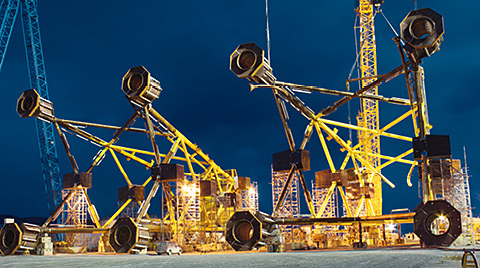
Test and research findings pave the way to new applications like that of HFI-welded steel tubes in the foundation structures of offshore wind turbines.
Hardly any component survives our testing unscathed – without this destructive method there are no instructive findings.Dr.-Ing. Susanne Höhler, Salzgitter Mannesmann Forschung GmbH
Application-related component testing
"We conduct component tests to determine the mechanical load-bearing behavior, and particularly the strength, deformation and fracture behavior, and structural durability under service conditions," says Dr.-Ing. Susanne Höhler, head of Component Safety. "The findings also help us to give our FEM calculation models an experimental foundation." In the testing of line pipe, it is a question of qualifying new products and pipe grades, identifying load-bearing reserves for the assessment of pipeline safety, and simulating pipe-laying conditions. For instance, we replicate the stressing of line pipe laid in marine environments in collapse tests, while laying processes such as reel laying and S-laying are simulated with bending tests.
Elaborate new test method
Multi-axial load-bearing behavior has become increasingly important in the last few years. "Multi-axial load conditions can occur on a line pipe when, for example, it is exposed to external deformation and forces from bending or ground movements," Höhler explains. They cannot be prevented from affecting pipelines and can be expected to occur more and more often. This is because a growing number of resource deposits are being found in areas with difficult geological and climatic conditions. The pipes and connections employed must therefore have sufficient deformation and load-bearing reserves to withstand these stresses.
LiSA puts the pressure on
So that tests can be carried out in this challenging area, the test facility LiSA (Limit State Analyzer) went into operation at the end of 2011. The purpose of testing is to realistically simulate the load-bearing behavior of a laid pipeline exposed to earth movement. "Our LiSA is a real powerhouse," says Höhler referring to the technical data. "We can realistically subject large-diameter pipes up to 56 inch/1,422 mm diameter to bending tests with and without internal pressure." Bending is performed in a 4-point bending test with a maximum pipe length of 15.5 m. Via the two load application points each with two 2.5 MN test cylinders, a total bending force of 10 MN can be applied. "This is equivalent to the pressure from five 200 t giant excavators, all standing on the pipeline at the same time." Test capacity is sufficient for testing a multitude of load combinations. For example, super-high-strength pipes of grade X100 steel with wall thicknesses up to 25 mm can be readily bent and tested to specification.
Destructive but instructive
"The goal is to identify the chief failure mechanisms," says engineer Höhler. What sounds so tame in theory means almost always for the tester in practice: Apply plenty of tension or compression to the pipe and let it rip. "Hardly any component survives our testing unscathed – without this destructive method there are no instructive findings," she adds.
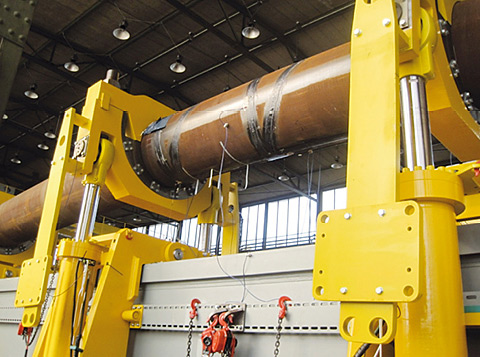
In the LiSA (Limit State Analyzer) unit, large-diameter pipe in diameters up to 56" / 1,422 mm can be subjected to bending tests under real-life conditions with and without internal pressure.
Practical benefits
The results and the findings derived from them are many and varied and always target specific practical benefits. "Our test and research results benefit production in the short, medium and long term and our newly developed products and systems benefit the Group companies," Höhler reports. Like at Salzgitter Mannesmann Line Pipe: In mutual cooperation, the Component Safety department has been systematically investigating the multi-axial load-bearing behavior of HFI-welded steel pipes since the end of 2011. "We take account of the behavior of both the material and the component. This has meanwhile given rise to very definite product improvements in terms of the required application-related pipe properties."
Specific customer benefits
Dr. Hendrik Löbbe, head of Quality at the Hamm location of Salzgitter Mannesmann Line Pipe: "Thanks to research & development, we can supply our customers today with line pipe that often more than satisfies the constantly growing aspirations concerning material and component properties. In addition to conventional design criteria, we can therefore supply our customers with extensive further safety analyses."
Research into steel
In-depth research is still being conducted into the material steel even after 75 years. Here, again, Salzgitter Mannesmann Line Pipe benefits. Whenever, for example, the development of new grades of steel for challenging customer projects is concerned, the Materials Development department at Salzgitter Mannesmann Forschung GmbH is often involved. Löbbe: "We profit here from a lively exchange of information. If necessary, we all get round the table – those from steel making and rolling, we from the pipe manufacturer, the downstream processors and, of course, the staff from research & development."
The customer comes first
The findings often result in new products and applications like that of HFI-welded steel tubes in the foundation structures of offshore wind turbines. "For us the customer always comes first. Research & development ultimately make products safer and often more economic, and they pave the way to new applications and innovative products," says Löbbe. "We're glad to be able to work together in this area with such a competent partner."
Collapse tests
Collapse tests investigate the load-bearing capacity of empty line pipe laid underwater. The pipe is inserted into the test chamber and exposed externally to water pressure.
Burst tests
In burst tests, end caps are welded onto the pipes to create containers. The internal pressure is usually applied by filling them with water. Burst pressures and burst behavior (fracture surface and type) and deformations are measured. In pulsating internal pressure tests, pressure cycles are built up to determine fatigue strength.
Multi-axial load-bearing behavior
Pipelines are primarily designed for resistance to internal pressure from the transported medium. In addition to the internal pressure, external stresses can act on a pipe string, resulting in a combined multi-axial load condition. On the LiSA testing facility, buckling conditions in the compression zone and tensile failure in the tension zone are analyzed under bending stresses or in a pipe bend.
Salzgitter Mannesmann Forschung
Salzgitter Mannesmann Forschung GmbH is the central research company of the Salzgitter Group. Employing about 300 members of staff active in eight main departments at the Salzgitter and Duisburg locations, SZMF conducts extensive, in-depth research and development work revolving around the material steel.
R&D activities concentrate mainly on the following key areas
- The development of new materials and application areas
- Processes for the manufacture, processing and application of metallic materials
- Material and component characterization including testing techniques
- Application technology from component design through to metal forming and on to joining technology
- Surface technology with refining systems and their characteristics from visual aspects through to corrosion resistance
- Automation and testing techniques, as well as the construction of non-destructive testing facilities
At the Salzgitter location, the research emphasis is on hot-rolled and cold-rolled products, while activities in Duisburg focus more on tubes, sections and heavy plate.
Apart from Salzgitter AG companies, the customer roster includes numerous leading corporations from a wide range of industrial sectors such as the automotive industry, machine building and plant engineering, as well as energy engineering and the construction industry.
